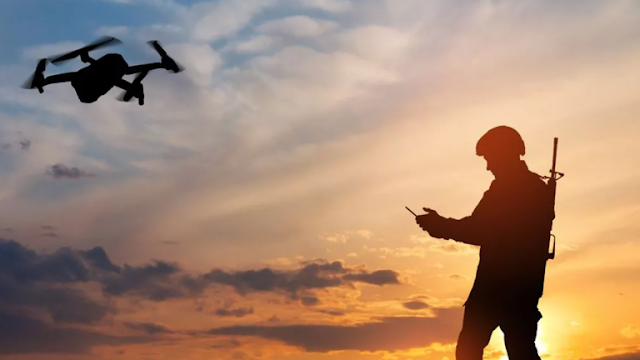Despite these concerns, both sides are racing to deploy unmanned AI-driven machines, including submarines, warships, fighter jets, swarming aerial drones, and ground combat vehicles. These initiatives signify the development of autonomous "killer robots" that will work alongside human decision-makers. Some of these robots are designed to collaborate with conventional ships, aircraft, and ground troops, promising significant increases in firepower and a revolution in the way battles are fought, according to military analysts.
Among these autonomous systems is the remarkable Ghost Shark, capable of maneuvers far beyond the capabilities of conventional military vehicles, such as diving thousands of meters below the ocean's surface.
The potential of AI systems to assist military commanders by processing vast volumes of data from satellites, radars, sonar networks, signals intelligence, and online traffic is perhaps even more revolutionary than autonomous weaponry itself. Technologists argue that the sheer volume of information has become too immense for human analysts to manage efficiently. AI systems, trained to process this data, can provide commanders with quicker and more comprehensive battlefield awareness and a wide array of options for military operations. Furthermore, AI's capacity to analyze surveillance imagery, medical records, social media activities, and even online shopping behaviors introduces the concept of "micro-targeting" — enabling precision attacks on key combatants or commanders, regardless of their proximity to the front lines. Kyiv's successful targeting of senior Russian military leaders during the Ukraine conflict serves as an early example.
Nevertheless, AI's potential is not limited to targeting combatants; scientists have cautioned against the use of swarms of small, lethal drones that could target large groups of non-combatants, potentially leading to devastating consequences. As computer scientist Stuart Russell pointed out, unlike nuclear weapons, these drones leave no radioactive aftermath and preserve valuable physical assets.
AI-Powered Drones on the Horizon:
Both the United States and China have conducted tests involving swarms of AI-powered drones, with the U.S. military releasing footage of troops training with these drone swarms. This emerging technology has the potential to offset China's numerical advantage in missiles, warships, and strike aircraft, particularly in scenarios involving Taiwan. According to U.S. Deputy Secretary of Defense Kathleen Hicks, the United States aims to deploy "multiple thousands" of autonomous unmanned systems within the next two years, challenging China's dominance with a more adaptable and resilient force.Even drones with limited AI capabilities can have a significant impact. Miniature, remote-controlled surveillance drones with partial autonomy, such as the Black Hornet 3, are already in service. These pocket-sized drones are difficult to detect, operate silently for extended periods, and provide real-time situational awareness to soldiers in the field.
Australia's Approach to Advanced Submarine Technology:
In the pursuit of countering China's rising military power, the Australian Navy is taking two distinct paths toward advanced submarine technology:1. The Expensive and Slow Approach: Australia plans to invest in up to 13 nuclear-powered attack submarines, each costing more than AUD$28 billion ($18 billion) on average. However, the last of these submarines is not expected to be operational until well beyond the middle of the century.
2. The Affordable and Swift Approach: Australia is also launching three unmanned submarines, known as Ghost Sharks, powered by artificial intelligence. These autonomous submarines come at a fraction of the cost, with each unit priced at just over AUD$23 million, and they are scheduled for deployment by mid-2025.
These two submarine types differ significantly in complexity, capability, and size, with the uncrewed Ghost Shark resembling the size of a school bus, while Australia's nuclear submarines will be football-field-length vessels with a crew of 132. The stark contrast in cost and delivery time underscores the transformative potential of AI-driven automation in reshaping military capabilities and the intensifying rivalry between the United States and China.
By eliminating the need for human crew members, the design, production, and performance of submarines undergo a radical transformation. Ghost Shark, for instance, lacks a traditional pressure hull, allowing water to flow freely through its structure. This design flexibility enables cost-effective and rapid production, a key focus for companies like Anduril, which is building the Ghost Shark submarines for the Australian Navy.
Shane Arnott, a senior vice-president of engineering at Anduril, emphasized how much of the expenses and systems in traditional submarines are directed towards supporting human crews. This shift toward autonomous designs not only reduces costs but also enhances production efficiency. Anduril is committed to developing a scalable production process for these submarines, not only for Australia but also for potential customers such as the United States, Britain, Japan, Singapore, South Korea, and Europe.
In this era of AI-powered warfare, Australia, a close ally of the United States, could potentially deploy numerous lethal autonomous submarines years before its first nuclear submarine enters active service.




